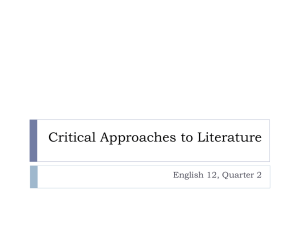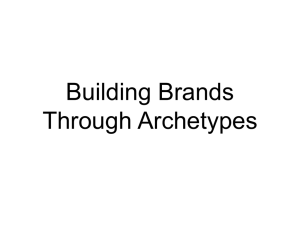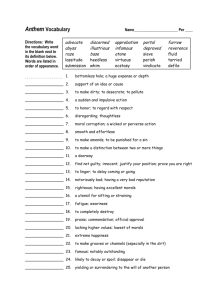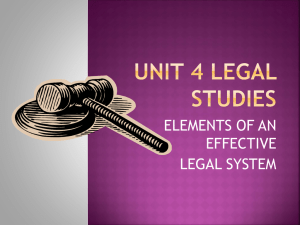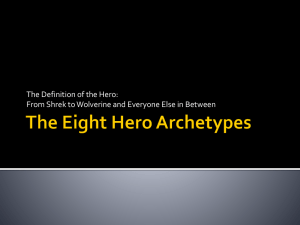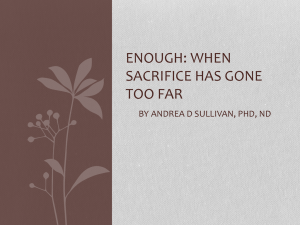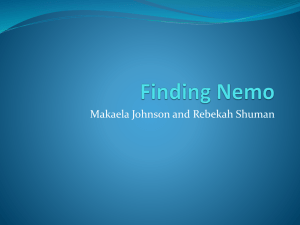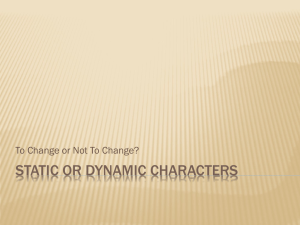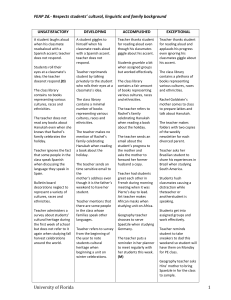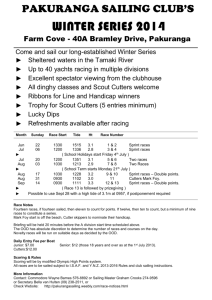Critical Approaches to Literature
advertisement
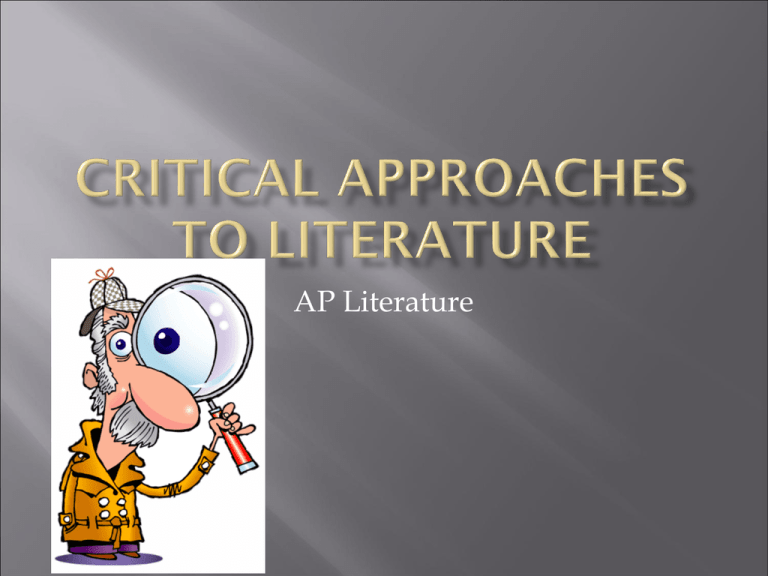
AP Literature Critical approaches are different lenses through which we can approach, interpret, analyze, and examine texts Certain approaches are more applicable to certain texts than others Does the text relate to other disciplines (history, psychology, sociology, science, etc.)? Does the work reflect or challenge cultural assumptions (gender, race, social class, etc.)? How might another’s discussion of a work help you develop, enhance, or qualify your perception of a work? How might one reconcile multiple interpretations/lenses of a work? EVERY text (novels, films, ads, images, everything) contain conscious and subconscious messages placed there by the author or perceived by the consumer Understanding the layers of meaning in a text leads to a richer reading or viewing experience Using a critical approach uncovers those messages Critical understanding allows you to make informed opinions and ask informed questions of a text, image, ad, film, book, news, etc. Incorporating critical approaches into how we view the world leads to a deeper appreciation of the human experience Critical reading/viewing promotes critical thinking in all aspects of life While you read, you look for clues pertaining to the approach you have chosen Your evidence must be specific – character dialogue, actions, descriptions Then, you explain what you have discovered (or uncovered) through writing, discussion, or other formal communication Examples: You watch Lion King and look for specific morals or lessons the story teaches its viewers. You watch Jersey Shore and consider how each character’s gender affects his or her actions. You read any piece of writing and determine its value or merit Psychological aspects of the text, including archetypes, determine deeper meaning of symbols and characters Many stories follow patterns, often established in ancient mythology How does this story resemble other stories in plot, character, setting, or use of symbols? Are archetypes presented? Do specific allusions to myths shed light on our understanding? As you read… Where have I seen this type of story before? Do these characters seem familiar? Examples: Hero’s Journey – Star Wars, Where the Wild Things Are, Ender’s Game, Odyssey, Harry Potter and the Sorcerer’s Stone, Lord of the Rings, O Brother Where Art Thou?, Hunger Games, Finding Nemo Villain Archetypes – Darth Vadar, Jafar, Poseidon, Sauron, Voldemort, President Snow, Ursula Damsel in Distress Archetype – Super Mario Brothers, Cinderella, Snow White, Sleeping Beauty Sidekick Archetype – Robin, George Costanza, Tonto Literature is a representation of class struggle with an emphasis on social inequalities, social justice, and economic disparity All stories feature characters whose lives have been shaped by their economic situations All stories feature power struggles, often between or within social classes or social ranks How much control does one group or character have over another? As you read… What is the class of the characters, and how is that shown? How are money, power, and resources used in the story? Examples: Animal Farm – Pigs and humans versus the rest of the farm Hunger Games – The Capital versus the districts; the districts versus one another Of Mice and Men – George and Lenny’s lack of resources and recourse To Kill a Mockingbird – How Mayella Ewell is affected by her social class and rank Literature reflects the life of the author, the historical period in which the work was produced, and the historical period in which the work is set How is the work related to the life of author or the time period in which it was written? To what extent is the work a mirror of a time period? To what extent is the work a judgment of a time period? As you read… What was happening in the world when this was written/produced? What is the setting of the work? How is that setting used to create a mood? Examples: The Lord of the Rings – Books were written post WWI; films were made post 9-11 The Crucible – Arthur Miller lived during the Red Scare of the 1950’s and uses the Salem Witch Trials to parallel that experience The Great Gatsby – F. Scott Fitzgerald achieved fame during the 1920’s for his excesses, yet struggled to fit in with social elites To Kill a Mockingbird – Written during the Civil Rights movement The Lorax – Written during the beginning of the environmental movement in the 1970’s. Literature considers the experience of women as authors and feminine roles within a text Are women represented in literature? And if so, how are they represented? How are women understood in the larger collection of literature of a culture or time period? Are gender roles explored equitably? As you read… What are the genders of the characters? Do their genders matter? How similar or different are the characters from traditional gender roles? Examples: The Office – The stereotypical office roles by gender (Michael Scott is the boss, Pam Beesly is the secretary Of Mice and Men – The only female character is Curly’s wife, who plays the role of the temptress and has no name Hunger Games – Katniss is a female protagonist who departs from traditional gender stereotypes The Scarlet Letter – Hester Prynne is the first American female protagonist Literature contains explicit or implicit morals, values, and lessons To what extent does a work mirror the morals and values of a culture? How do the characters act, and what sort of model do they provide to a reader? Will the work help readers lead better lives and improve their understanding of the world? As you read… What consequences do characters face for right or wrong choices? What lesson is the story teaching? How do the morals of the story differ from yours? Examples Juno – Discusses morals and lessons concerning teenage pregnancy Lion King – Teaches viewers to face challenges and honor commitments Absolutely True Diary of a Part-Time Indian – A Native American student must decide between tradition and self-preservation The author’s work and character behavior is caused by obvious and hidden, conscious and unconscious motives What do characters’ emotions and behaviors reveal about personality and psychological states? What psychological theories or frameworks apply to the text or characters? Are patterns such as repression, dreams, and desire presented consciously or unconsciously by the author? As you read… Why is this character acting the way s/he is? What happened to this character in the past, and how is that past affecting the present? Examples: Catcher in the Rye – Holden Caulfield’s brother’s death and unsupportive family leads to his mental instability Lost – Jack’s unresolved issues with his father lead to his inability to lead the survivors Biggest Loser – Contestants must deal with their psychological issues in order accomplish their fitness goals Finding Nemo – Marlin must overcome the loss of wife to allow Nemo to grow; he must also find value in the imperfect fishies in the story Explores the perspective of marginalized ethnic groups to address a history of discrimination and inequity How has the author’s race and culture contributed to a work? How are different races and cultures represented, especially in relation to each other? Are different races and cultures explored equitably? What advantages and obstacles are presented to characters based on their races or cultures? As you read… What races and cultures are represented in a text? How are they represented? Is there discrimination? If so, how is it addressed? How does my race and culture affect my understanding of a character? Examples: The Color of Water – Dual story of Jewish woman moving from South to North and her son who is raised in a bi-racial family. Remember the Titans – African-American high school football team faces and overcomes discrimination Absolutely True Diary of a Part-Time Indian – Native American author struggles with discrimination as a child Zeitoun – Syrian-American experience in New Orleans during Hurricane Katrina
